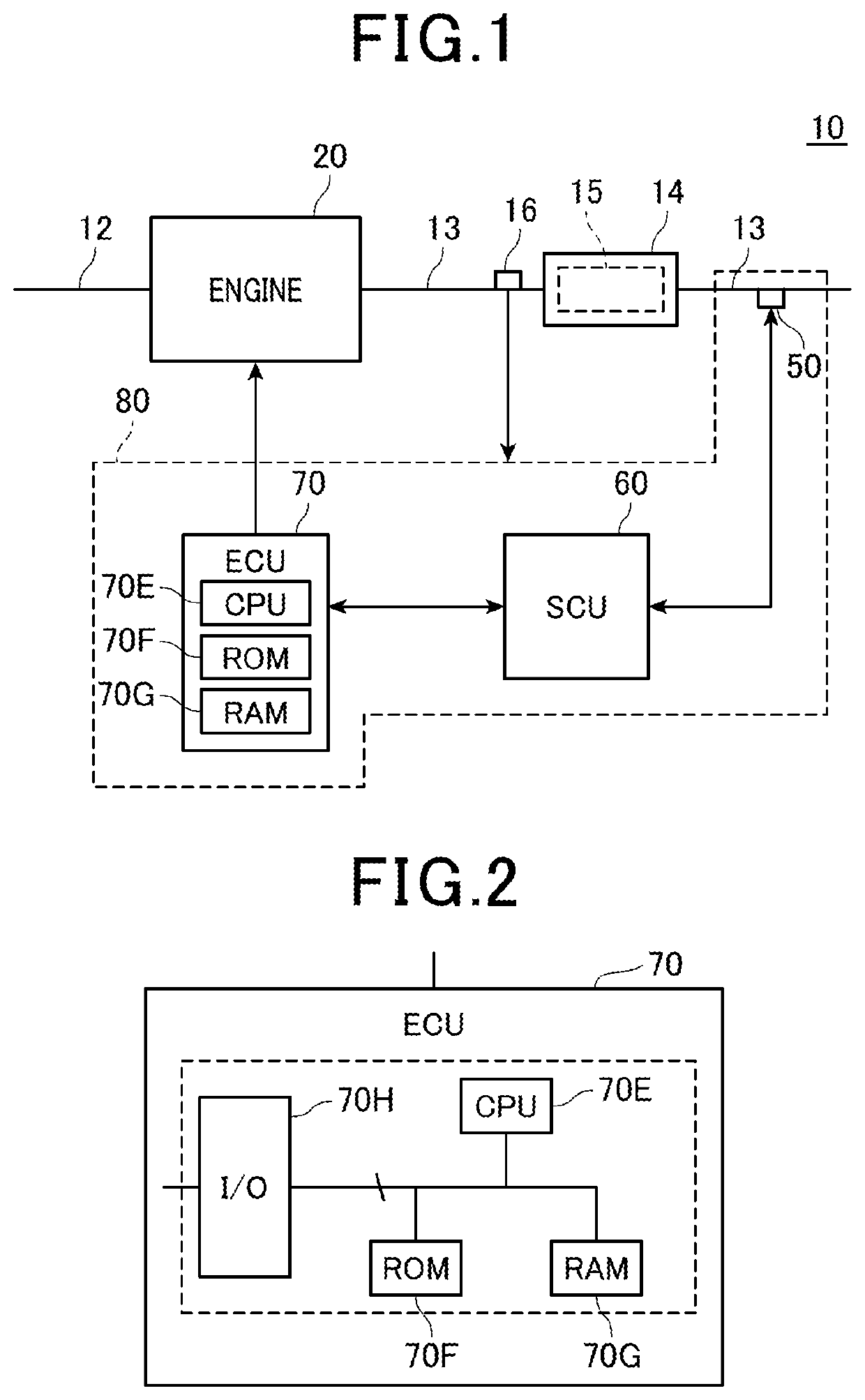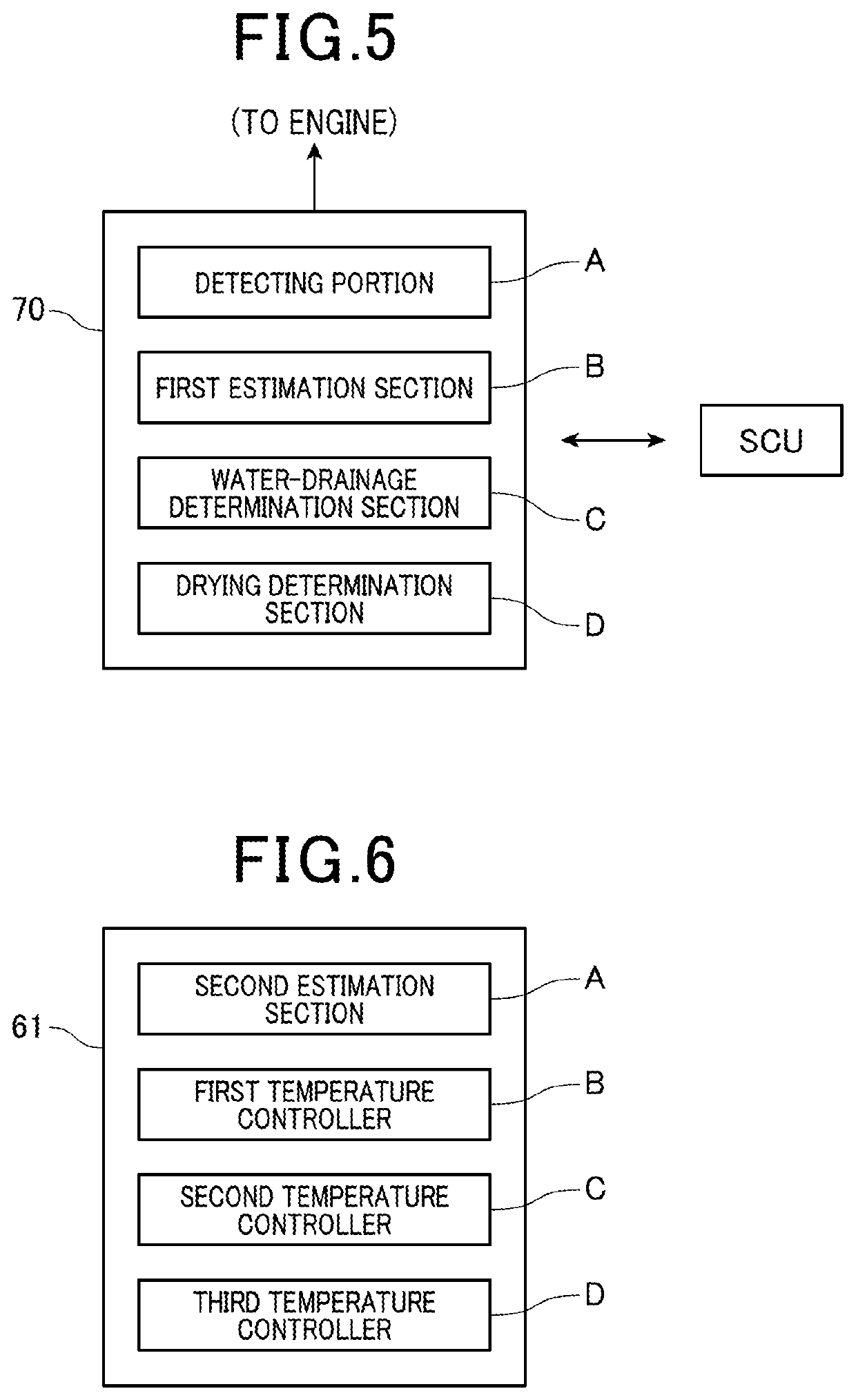Particulate matter detection apparatus that mitigates water collection
a detection apparatus and technology of particles, applied in mechanical devices, instruments, machines/engines, etc., can solve the problems of increasing detection errors and element cracking, and achieve the effects of preventing water-induced cracking of element portions, preventing water-induced cracking of sensor elements, and suppressing contamination of element portions due to pollutants
- Summary
- Abstract
- Description
- Claims
- Application Information
AI Technical Summary
Benefits of technology
Problems solved by technology
Method used
Image
Examples
first embodiment
[0026]Firstly a configuration of an engine system 10 of a first embodiment is described. As shown in FIG. 1, the engine system 10 is provided with an engine 20. The engine 20 (internal combustion engine) is a diesel engine, for example. The engine 20A is connected to an intake passage 12 and an exhaust passage 13. An exhaust gas purifying device 14 is mounted on the exhaust passage 13. The exhaust gas purifying device 14 is configured to remove toxic components from exhaust gas, which is emitted from the engine 20. The toxic components are PM, for example, nitrogen oxides, and carbon compounds such as HC (hydrocarbons) and CO (Carbon Monoxide), which are generated from fuel that has not burned or from incomplete combustion. Particularly in the present embodiment, a PM capturing filter 15 is provided on the exhaust purification device 14. The exhaust gas purification device 14 is a known configuration, therefore further details are omitted.
[0027]The engine system 10 is equipped with ...
second embodiment
[0076]Next, parts of a second embodiment which are different from first embodiment will be described with reference to FIG. 13.
[0077]If the engine 20 is a diesel engine, an intake volume is large and the temperature of exhaust gas is low compared to a gasoline engine. For example, an exhaust gas temperature of a diesel engine rises to 400° C., compared to 800° C. for a gasoline engine. As a result, if the engine 20 is a diesel engine, the exhaust passage 13 is easily quenched when fuel is cut, and condensed water may be generated, compared to a gasoline engine. Moreover, the element portion 41 may become in the state of the invasion of water. Also, if the engine 20 is installed in a hybrid vehicle, quenching of the exhaust passage 13 and generation of condensed water may occur during idle reduction and when fuel is cut at a point of regeneration brake. In such circumstances, the element portion 41 may become in the state of invasion of water.
[0078]In a situation of heavy rain, for e...
PUM
| Property | Measurement | Unit |
|---|---|---|
| temperature | aaaaa | aaaaa |
| water-repellent temperature | aaaaa | aaaaa |
| combustion temperature | aaaaa | aaaaa |
Abstract
Description
Claims
Application Information
 Login to View More
Login to View More - R&D
- Intellectual Property
- Life Sciences
- Materials
- Tech Scout
- Unparalleled Data Quality
- Higher Quality Content
- 60% Fewer Hallucinations
Browse by: Latest US Patents, China's latest patents, Technical Efficacy Thesaurus, Application Domain, Technology Topic, Popular Technical Reports.
© 2025 PatSnap. All rights reserved.Legal|Privacy policy|Modern Slavery Act Transparency Statement|Sitemap|About US| Contact US: help@patsnap.com



